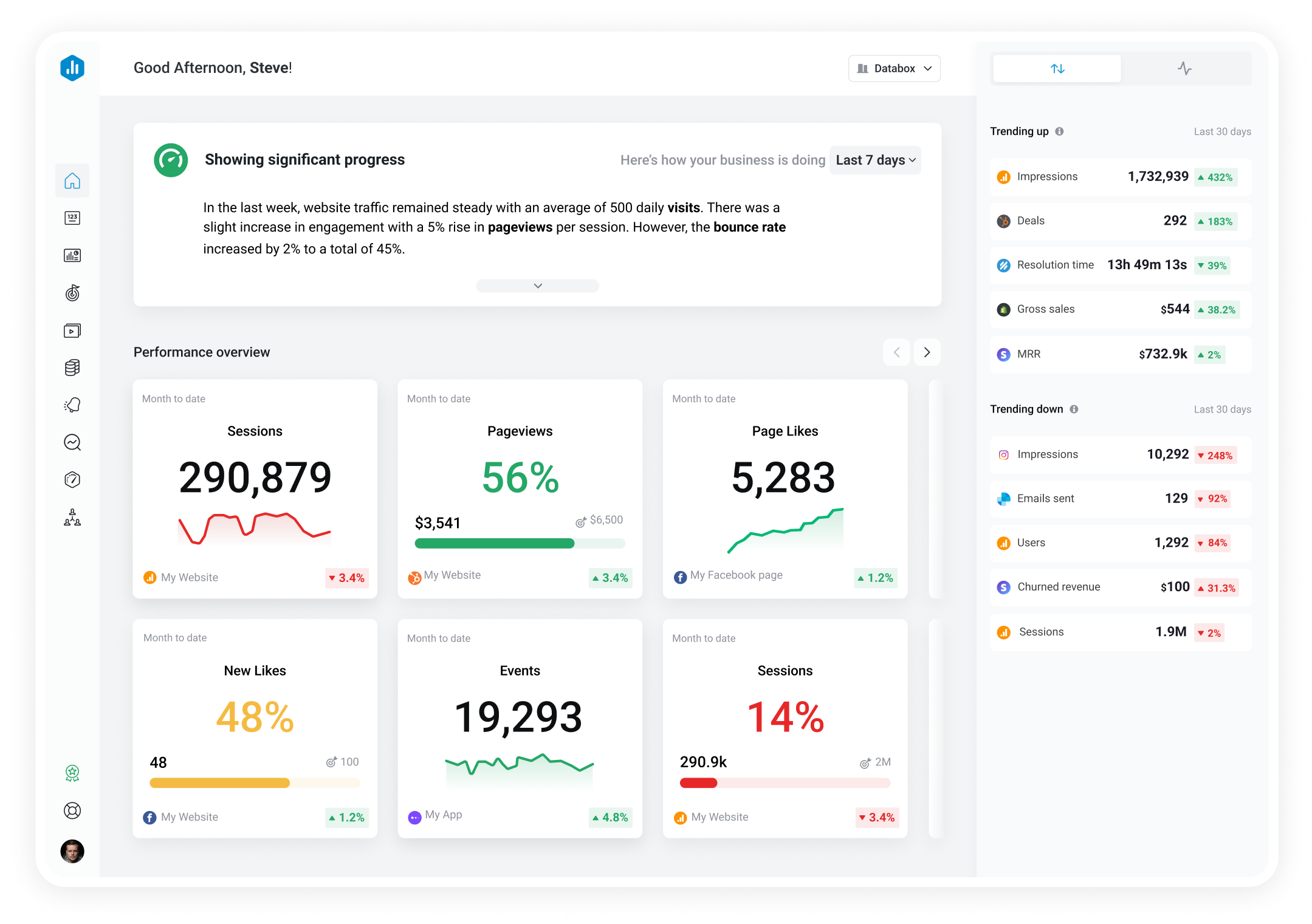Track all of your key business metrics from one screen
GET STARTED
 Facebook Ads
Leads
Facebook Ads
Leads Leads metric indicates the number of people who have shown interest in your product or service by providing their contact details through a lead form on Facebook or Instagram ad.
With Databox you can track all your metrics from various data sources in one place.
Leads refers to a metric used in marketing to track potential prospects and evaluate the efficiency of your company’s lead generation efforts.
In simple terms, a lead is an individual or organization that has shown interest in a product or service that a business offers.
They can show interest in a variety of ways, such as filling out a form on a website, subscribing to a newsletter, or attending a webinar.
The exact method of calculating leads will depend on your specific business and the lead generation channels you use.
You need to define clear criteria for what constitutes a lead and establish consistent tracking mechanisms to measure your leads metric accurately.
Here are a few common approaches:
A good number of leads for a business to generate can vary widely depending on factors such as the industry, business model, target market, and specific goals.
That said, we pulled out some useful benchmarks from our product that might be helpful in assessing your lead generation efforts.
If you want to stay on top of future trends and be able to instantly compare your performance to companies just like yours (in any given industry), you can join our Benchmark Groups – it’s free for everyone!
How to Generate More Leads
To generate more leads for your business, you need to develop a targeted and strategic approach to your lead generation efforts.
And one of the best ways to move the needle is to get insight into what the leading experts in the industry are doing.
We talked to hundreds of marketers and pinpointed some of the main practices they use to generate more leads
More resources to help you improve:

Used to show a simple Metric or to draw attention to one key number.

Used to illustrate numerical proportions through the size of the slices.

Used to show comparisons between values.
Databox is a business analytics software that allows you to track and visualize your most important metrics from any data source in one centralized platform.
To track Leads using Databox, follow these steps:
 Goals
Goals Scorecards
Scorecards Metric Digest
Metric Digest Metric Builder
Metric Builder Data Calculations
Data Calculations Performance Screen
Performance ScreenMeasure performance across key metrics like ad spend, clicks, conversions, and ROAS—powered by Facebook Ads data. Designed for CMOs, PPC experts, and Facebook Ads specialists to optimize results and scale impact.

There are several ways you can classify leads, but the most common approach is based on their level of interest, engagement, and potential to convert into customers.
Here’s a quick breakdown:
Qualifying leads means evaluating their potential to become customers.
Here are common steps and criteria to qualify leads:
